The airline industry in the United States plays a crucial role in both domestic and international travel. Serving millions of passengers annually, major U.S. airlines have become a cornerstone of the global transportation system. They connect a vast country from coast to coast, and facilitate the movement of people and goods across borders, shaping the nation’s economy and its engagement with the rest of the world. Over time, these airlines have not only expanded in size but also in the quality of services they provide, redefining the travel experience for customers.
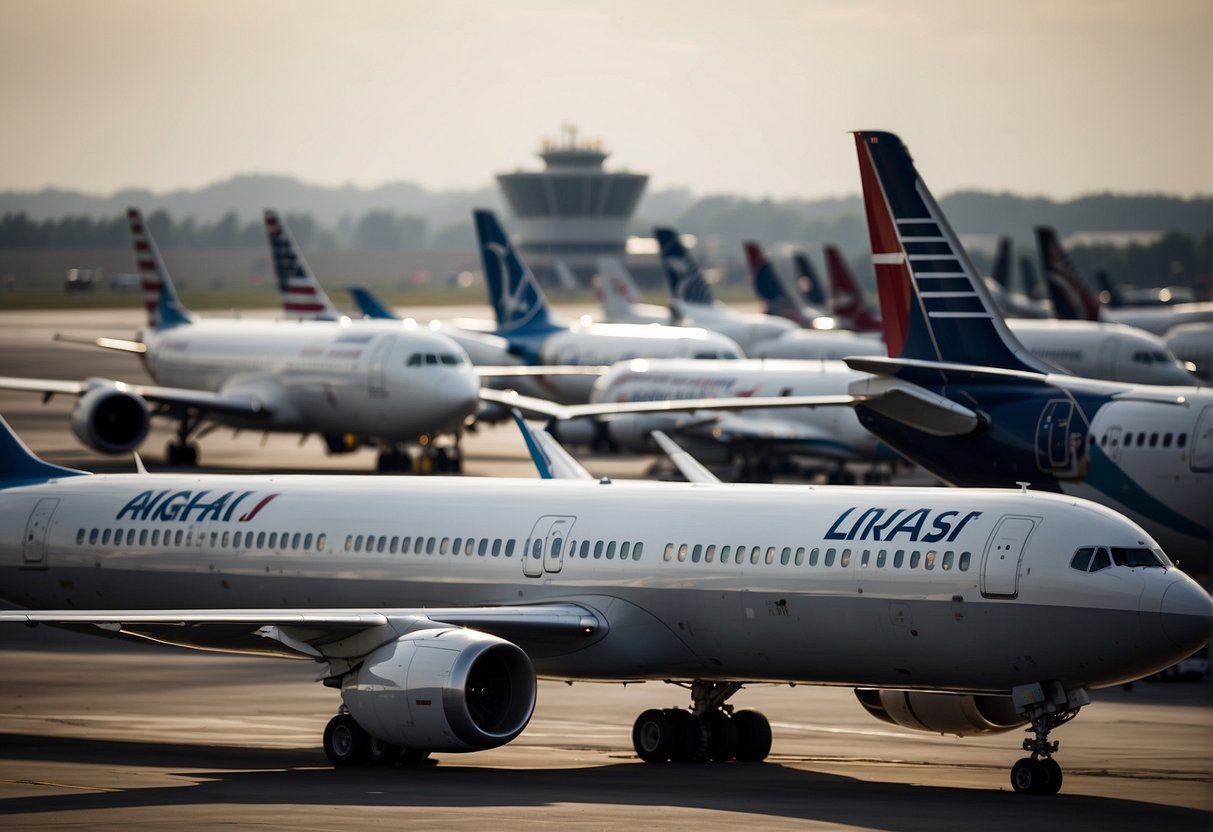
The operational aspects of these carriers are diverse, with each airline featuring a unique history, operational strategy, and customer service approach. Competition among these companies has historically led to innovations in customer satisfaction, industry trends, and technological advancements—ultimately setting standards and influencing airline practices worldwide. Besides, regulatory and environmental considerations continually shape the operational dynamics of the industry, pressing airlines to adapt to ever-evolving policies and public expectations.
Key Takeaways
- Major U.S. airlines are vital for transportation and significantly affect the economy.
- They feature unique operational strategies and history, driving innovation in the industry.
- Regulatory and sustainability factors increasingly influence airline operations.
Historical Context of U.S. Airlines

The history of U.S. airlines is marked by pioneering efforts, the growth of legacy carriers, and significant changes due to deregulation, which reshaped the industry.
Pioneers of Aviation
The Wright brothers initiated the era of aviation in the U.S. with their first powered flight in 1903. Following this breakthrough, numerous individuals and companies entered the field, contributing to rapid technological advancements. Air mail contracts in the 1920s and 1930s, primarily issued by the Post Office, played a critical role in the commercialization of aviation and the establishment of early airline routes.
Legacy Carriers Evolution
Several legacy carriers, which are airlines that have been in operation since before the deregulation of the airline industry in 1978, have their roots in this early period. American Airlines, for instance, started as a mail carrier before becoming a commercial airline. Together with other major players like United and Delta, these carriers formed the backbone of U.S. air travel, expanding routes and services. Over time, they have evolved under the regulatory oversight of the Federal Aviation Administration (FAA), ensuring safety and industry standards.
Deregulation Impact
The Airline Deregulation Act of 1978 significantly impacted the industry, removing government control over fares, routes, and market entry. This led to increased competition, lower fares, and the birth of new carriers, including low-cost airlines which further democratized air travel. Legacy carriers had to adapt rapidly to maintain their positions in the market. The deregulation ultimately enabled greater choice and flexibility for passengers, transforming the U.S. airline landscape into one of the most dynamic in the world.
Major U.S. Airline Profiles
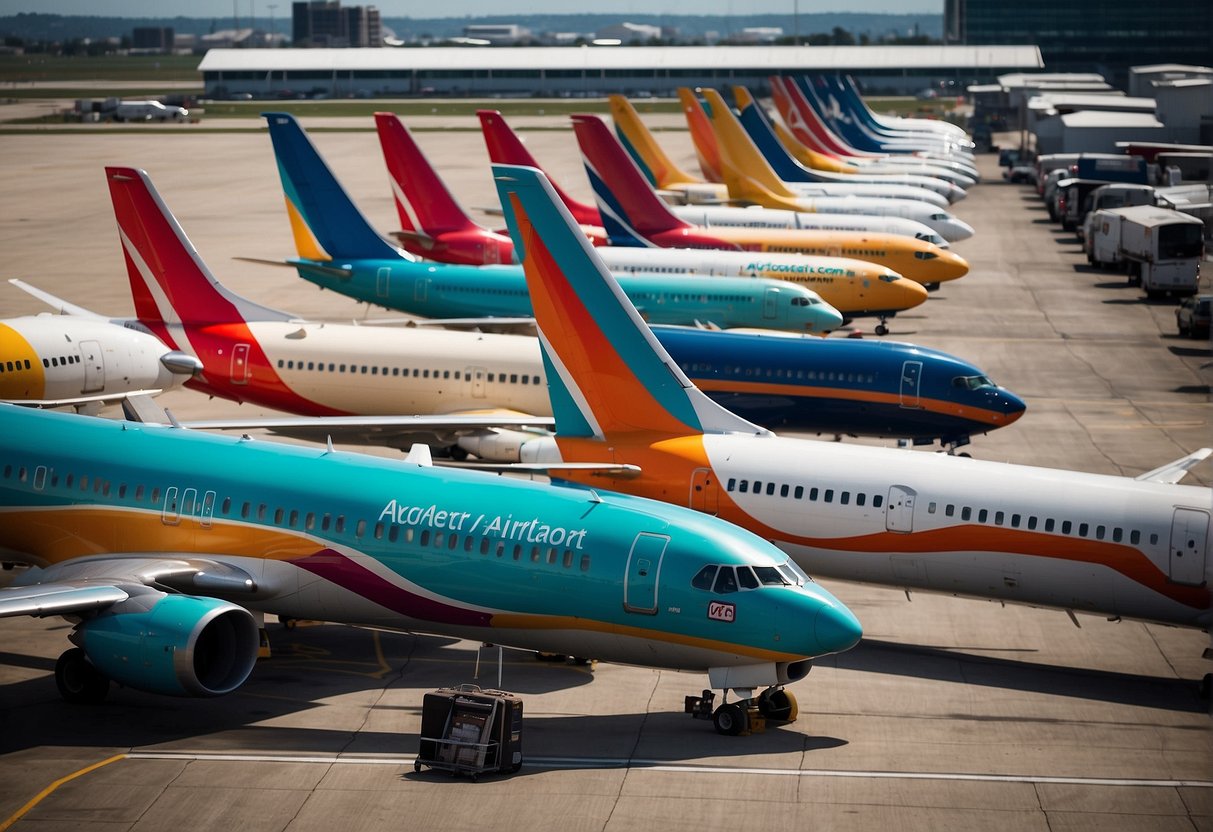
In the U.S. aviation market, several carriers stand out due to their size, extensive networks, and influence. These major airlines have established themselves as industry leaders, providing comprehensive domestic and international flight services.
American Airlines
American Airlines boasts one of the largest fleets in the world, offering extensive international flights and a wide range of domestic destinations. They’re known for their significant presence in key airports across the United States.
Delta Air Lines
Delta Air Lines operates a vast global network from its numerous hubs. With a reputation for high customer satisfaction, the airline is recognized for its innovative use of technology to enhance the passenger experience.
United Airlines
United Airlines holds a critical position in the market, with a substantial international reach and a significant domestic footprint. The carrier is a major player in both the business and leisure travel sectors, maintaining a comprehensive route network.
Southwest Airlines
Southwest Airlines, distinguished by its egalitarian seating policy and absence of baggage fees for the first two checked items, champions the low-cost carrier model. They focus on providing competitive fares without compromising service quality.
Low-Cost and Regional Carriers
Within the vast landscape of US airlines, low-cost and regional carriers offer economical options for both domestic and international travel. These airlines cater to budget-conscious travelers and often focus on point-to-point services.
JetBlue Airways
JetBlue Airways stands out for its amenities and customer service. Even as a low-cost carrier, they provide passengers with features like extra legroom and free in-flight entertainment.
Spirit Airlines
Spirit Airlines is known for its ultra-low-cost fares, enabling passengers to travel without the frills and extras that drive up ticket prices. They maintain a focus on domestic destinations but have been expanding their reach to international locations as well.
Alaska Airlines
Alaska Airlines operates a significant network that includes both domestic and international flights, often connecting the west coast to various locations and leveraging partnerships to enhance their coverage.
Hawaiian Airlines
Hawaiian Airlines provides a bridge from the U.S. mainland to the Hawaiian Islands, catering to both tourists and residents. Their in-flight services reflect traditional Hawaiian hospitality and culture, making them a choice carrier for travel to and from Hawaii.
Financials and Market Share
The financial health and market dominance of major US airlines are often assessed through their revenue, domestic market share, and fleet size. These metrics illuminate the competitive landscape and airlines’ operational efficiency in the industry.
Airlines Revenue
American Airlines, Delta Air Lines, and United Airlines lead in revenue among US carriers. As reported by the Bureau of Transportation Statistics, these airlines submit quarterly financial reports that indicate their fiscal performance, reflecting their ability to generate income amidst fluctuating economic conditions and operational challenges.
Domestic Market Analysis
The domestic market share is a critical gauge of an airline’s reach within the US. In a recent report, Statista detailed the market shares from February 2022 to January 2023, with American Airlines securing a significant percentage, followed by Delta and Southwest Airlines. Their strategic route planning and pricing play a pivotal role in capturing and retaining domestic travelers.
Largest Carriers by Fleet Size
Fleet size is a testament to the operational capacity of an airline. The largest carriers, such as American, Delta, and United, maintain extensive fleets to meet passenger traffic demands. Their fleet compositions are strategically designed to optimize route efficiency and passenger comfort. The US Department of Transportation categorizes airlines into majors, nationals, and large regionals based on operating revenues, which generally correlate with the scale of their fleets.
Operational Aspects of Airlines
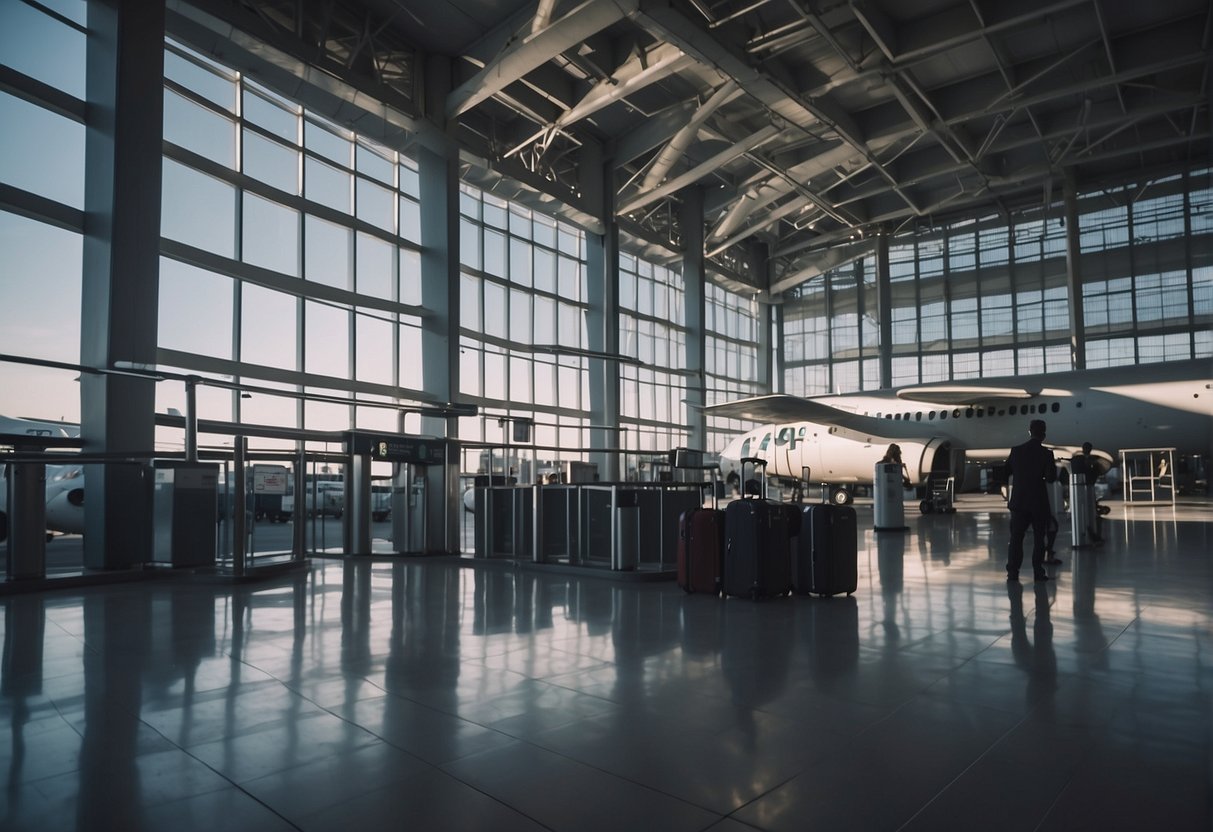
The operational aspects of airlines involve meticulous planning and coordination across various domains to ensure efficient day-to-day functioning. Ensuring that flights adhere to their schedule, managing the fleet effectively, and keeping all aircraft in top condition are critical for successful airline operations.
Flight Schedules
Flight scheduling is a complex process that requires airlines to balance multiple factors, including crew availability, aircraft location, and passenger demand. For example, Delta Air Lines maintains a high on-time arrival percentage, effectively managing its schedules to meet consumer expectations.
Fleet Management
Fleet management includes the strategic acquisition, utilization, and rotation of aircraft. U.S. airlines manage fleets worth billions of dollars, often favoring newer, more fuel-efficient models to optimize operations. The selection of aircraft and alignment with route demands are crucial, as seen in the importance put on input-oriented models when evaluating performance of airlines like those mentioned in a study on Springer.
Aircraft Maintenance
Aircraft maintenance is indispensable for safe and reliable flight operations. Airlines follow strict regulatory guidelines to schedule routine maintenance, inspections, and repairs. An airline’s commitment to maintenance significantly affects its operational reliability and the overall safety felt by passengers.
Customer Experience and Satisfaction
Customer experience and satisfaction are pivotal factors in the airline industry, directly impacting the reputation and choice of an airline by travelers. They encompass aspects like in-flight comfort, baggage handling, and boarding procedures, directly affecting the ratings provided by passengers.
In-Flight Comfort
Passenger comfort during a flight is a critical aspect of the travel experience. Airlines are evaluated on the quality of their seats, legroom, in-flight entertainment, and amenities. Passengers have shown increasing preference for airlines that provide more space and better entertainment options, making comfort a top priority for airlines to address.
Baggage and Boarding Procedures
Efficient baggage handling and streamlined boarding processes are essential for a positive travel experience. Airlines are consistently working to improve these aspects to minimize delays and mishandling of luggage. The introduction of technologies like biometric systems for boarding and sophisticated tracking for baggage are measures taken to enhance these procedures.
Passenger Satisfaction Ratings
Passenger satisfaction ratings are a comprehensive indicator of an airline’s performance in various areas, including comfort, service, and overall value. According to the J.D. Power 2023 North America Airline Satisfaction Study, satisfaction with major airlines has declined for a second consecutive year, highlighting the challenges airlines face and the importance of these ratings in a highly competitive market.
Industry Trends and Future Directions
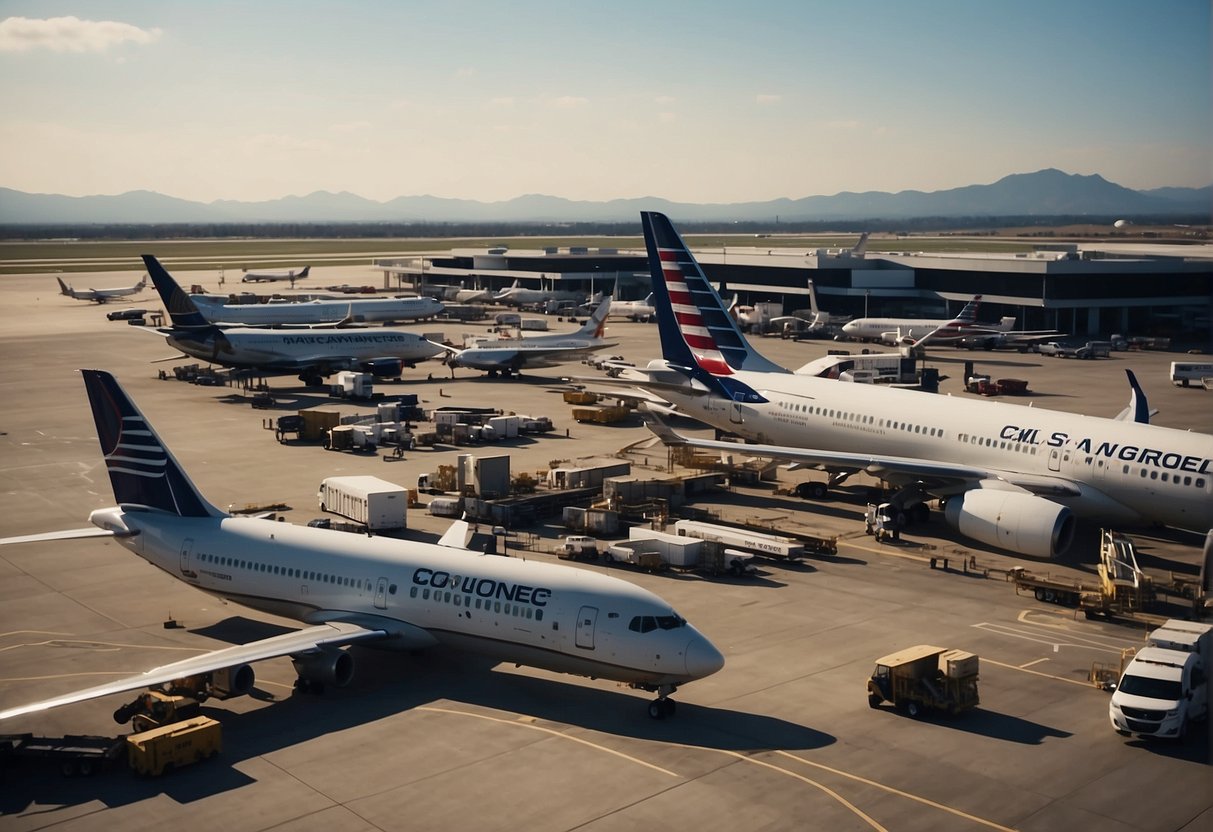
The airline industry is reshaping in response to evolving post-pandemic travel preferences, with significant advances in aircraft technology and strategic alliances driving the sector forward.
Post-Pandemic Travel Demand
Post-pandemic demand for air travel has witnessed a shift, with passengers now placing a higher priority on health and safety measures. Airlines are adapting by enhancing cleaning protocols and air filtration systems. They are also seeing increased travel demand to a broader variety of destinations, as travelers seek less crowded and more unique destinations.
Innovations in Aircraft
Aircraft manufacturing is experiencing a new wave of innovation with a focus on sustainability and fuel efficiency. The introduction of advanced materials and aerodynamic designs is transforming the fleet, making it possible to reach destinations more efficiently. Such innovations help in reducing the environmental impact while also lowering operational costs.
Airline Alliances and Partnerships
Alliances and partnerships among carriers are increasingly critical for extending market reach and providing seamless travel experiences. They facilitate code-sharing, frequent flyer benefits, and integrated services to meet the demand for a more connected travel industry. Such collaborations are expected to deepen, offering customers expanded networks and more travel options.
Regulatory and Environmental Considerations
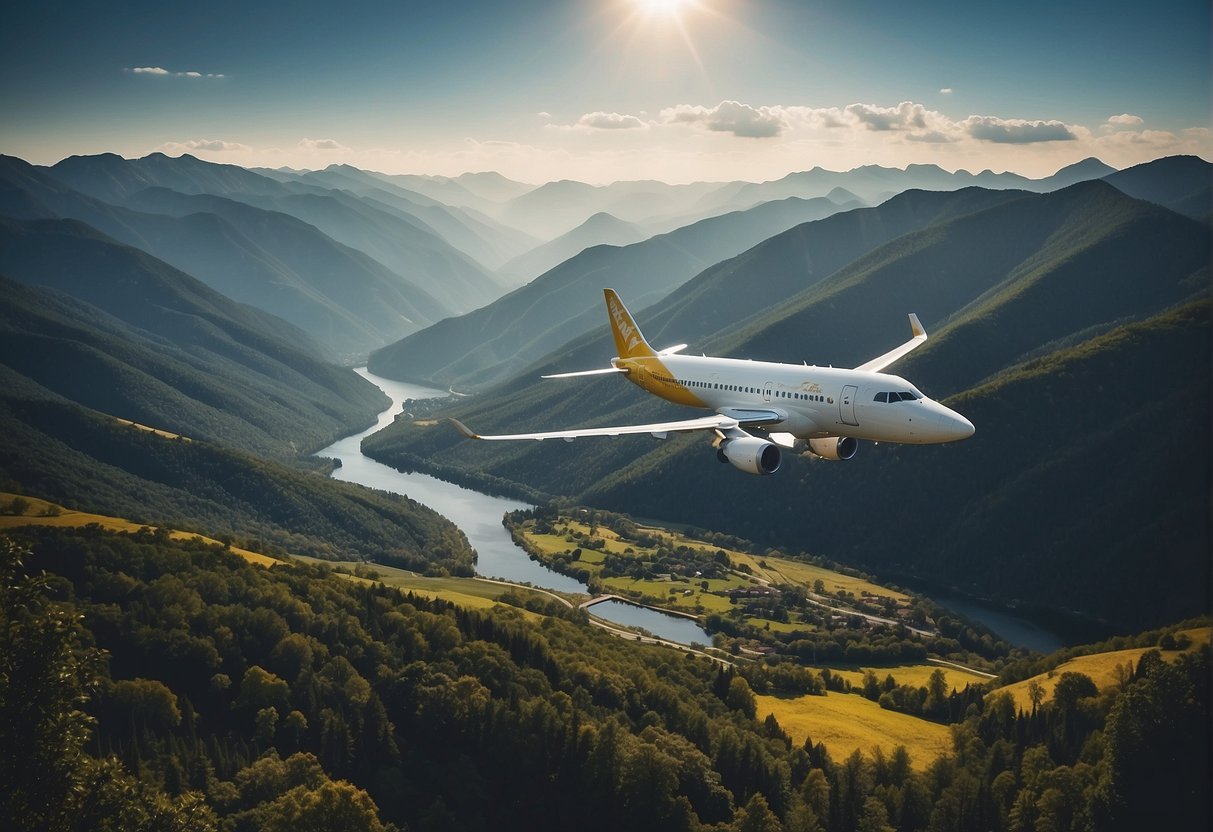
In the landscape of U.S. airlines, adherence to regulatory standards and environmental commitments is of paramount importance. The Federal Aviation Administration (FAA) plays a pivotal role in overseeing these aspects, ensuring that airlines comply with regulations that have significant implications for sustainability and public health.
FAA Regulations
The FAA establishes the regulatory framework for the aviation industry, covering a range of operational and environmental aspects. It dictates standards for safety procedures, aircraft operations, and the certification process for personnel and equipment. The Aviation Climate Action Plan, for instance, outlines strategies for the U.S. aviation sector to progress towards net-zero emissions by 2050. This includes promoting efficiency in air traffic management and advancing sustainable technology.
Carbon Footprint Initiatives
Airlines are actively working to reduce their carbon footprint through various initiatives. Adoption of more fuel-efficient fleets and investment in Sustainable Aviation Fuel (SAF) are among the strategies being employed. Noteworthy, American Airlines has been recognized for setting science-based emissions reduction targets, reflecting a sincere commitment to sustainability.
Noise and Emission Standards
Noise and air pollution are critical environmental concerns that airlines are required to address under FAA guidance. Airplane operations above 3000 feet, for example, are assessed for their air quality impacts. The FAA and Environmental Protection Agency (EPA) provide recommended practices for quantifying emissions, striving for the reduction of noise and pollutants, and contributing to cleaner air and quieter surroundings for communities near airports.
Global Impact and Competitiveness

Major US airlines exert a significant influence on global aviation, reflecting their extensive international networks and comparative market share globally.
International Presence
US carriers maintain dominant positions in North America, with hubs like Atlanta serving as vital nodes for international air travel. They operate extensive flight networks, connecting numerous international destinations with the United States. Airlines like Delta maintain a significant portion of market share, operating out of the world’s busiest airport by passenger traffic, Hartsfield-Jackson Atlanta International Airport.
Comparison with Global Airlines
When comparing US airlines with counterparts such as Air Canada and WestJet, US carriers often boast larger fleets and a broader international reach. Their financial resources and strategic alliances allow for competitive pricing and a diverse array of international routes. However, they contend with global airlines that may offer superior luxury services or more competitive rates on certain routes.
Challenges in the International Sector
US airlines face a myriad of challenges internationally, from fluctuating fuel prices to navigating geopolitical tensions and variable air travel agreements. Increasingly, they grapple with operational efficiency issues, where even a large number of employees can impact overall performance. The international aviation arena also requires US airlines to constantly innovate in areas such as pricing strategies to maintain their market positions amidst fierce global competition.
Frequently Asked Questions
The aviation industry is complex, with dynamics that shift due to factors such as technological advances, economic variances, and consumer preferences. This section addresses some common inquiries regarding the major U.S. airlines’ standings and operations.
How have the major U.S. airlines ranked by fleet size changed over time?
Historically, the major U.S. airlines have experienced fluctuations in fleet size due to mergers, acquisitions, and market demands. Airlines such as Delta and American Airlines have seen an increase in their fleet sizes over the years, securing their spots among the top due to strategic decisions and industry consolidations.
What are considered the top revenue-generating U.S. airlines?
Delta Air Lines, American Airlines, and United Airlines commonly lead as the top revenue-generating U.S. airlines. Their extensive route networks and operational efficiencies allow them to generate significant revenues, despite the competitive nature of the airline industry.
Which U.S. airlines maintain the largest market share?
American Airlines, Delta Air Lines, and Southwest Airlines are typically the frontrunners in terms of market share within the U.S. Their large fleets and broad route networks enable them to capture a considerable portion of domestic and international air travel demand.
How do the busiest hubs correlate to the largest U.S. airlines?
The busiest hubs are often operated by the largest U.S. airlines. Hubs like Atlanta’s Hartsfield-Jackson Airport, which is a strong base for Delta, and Dallas/Fort Worth International Airport, a major hub for American Airlines, are critical to these airlines’ operations and their ability to offer extensive flight connectivity.
What are the distinctions among the top-tier U.S. airlines?
Distinctions among the top-tier U.S. airlines can be observed in their route structures, loyalty programs, customer service rankings, and fleet compositions. While they may compete in many of the same markets, each airline has developed its own strategic advantages and brand differentiators.
How do American Airlines and United Airlines compare in terms of their service and network?
Both American Airlines and United Airlines offer extensive domestic and international networks and are known for a range of service classes, from economy to premium cabins. They compete closely on many routes, but differences may arise in their specific service offerings, frequent flyer programs, and operational performance metrics.
Leave a Reply